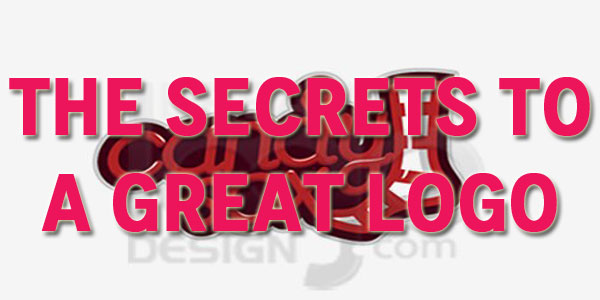 12 Aug 19
12 Aug 19
The Secrets to a Great Logo
Logo, graphic, image, logotype, typogram, logoform, photo...call it what you will, a custom logo by any name is the group of characters and/or symbols used in a consistent and unique solution to identify an organization. It's the most dominant and stable component of marketing, and really should be planned meticulously to fully echo your brand. Understanding the key areas of a logo can help in developing a durable, on aim for identity.
Format
You can find three common forms for a brand:
Image & Type -- Includes a literal or symbolic graphic with the business name positioned near but separate from your graphic.
Type-based -- A specific font in a specific color can be used for the company's image. Developing a type-based Dream Logo Design Company or "logotype," demands more than choosing the font and typing a title. In these logos, letterforms are fine-tuned and spaced in a unique combination and treated as art.
Integrated -- A one-piece custom logo, incorporating design and type jointly so the label and graphic become one product. Companies that use only initials frequently make use of this format.
Direction
Design progress of the emblem generally follows among three directions:
Graphic -- Actually describes the business's activity, such as for example selecting a tree or perhaps a shovel to depict a landscaping design company.
Conceptual -- Conveys an abstract high quality of the business, applying geometric or symbolic forms expressing a non-tangible feature.
Neutral -- Relies on font choice, excess weight, shape, spacing and shade instead of imagery to mention the message.
Style
Color, font and file format choices assist in building the feeling.
Traditional -- Attaining a classic picture calls for classic shades of red, navy and woodland green. Choosing an elegant script or serif font like Vivaldi, Times or Palatino, in addition to creating a balanced layout reflects a traditional image.
Modern -- Organizations looking for a contemporary image should consider modern elements. Sans Serif fonts like Helvetica, Myriad and Eras present clean outlines and straightforwardness. Brighter colors, strange combinations and multiple hues work. Modern designs are often organized and grid-like, or asymmetrical.
Casual -- Whenever a relaxed image is called for, a casual design may be wanted. Fonts that imitate handwriting, script or graffiti, such as Papyrus, Curlz and Comic Sans come in this category. Everyday styles stay clear of a stiff, conventional corporate image, using vibrant hues to comfy tones.
Uniqueness
You will need to be aware of the photos around you. Developing a Dream Logo Design Service that's inappropriate for your industry, too near a competitor's, or reminds audiences of another corporation can sabotage connection. A logo should be such as a fingerprint, original.
Logos have numerous elements that may be coordinated to provide maximum impact. When developing an image to reflect a brand, consider these key points for aligning visuals together with the verbal and experiential concept of your organization.


Comments